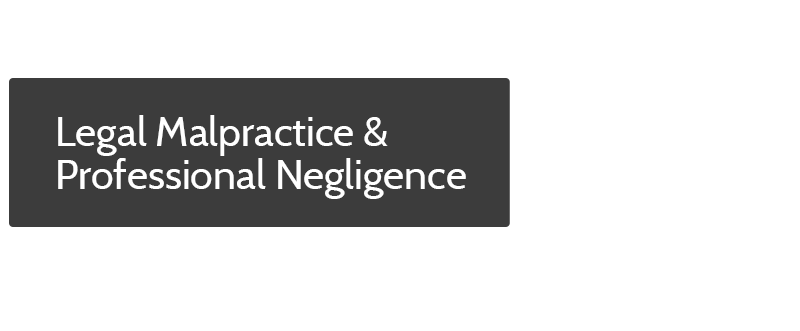What is the Statute of Limitations on Legal Malpractice?
WHAT IS A STATUTE OF LIMITATIONS?
A “statue of limitations” is a law that establishes the period during which a lawsuit or other claim can be brought against a wrongdoer. Phrased differently, a statute of limitation establishes the deadline before which a claim must be made, and a lawsuit filed. When the deadline in the statute passes, the relevant claims are extinguished–and no longer can be brought. For the plaintiff, this means the claim, and the right to recover damages will be lost if a lawsuit is not filed before the deadline (unless one of a very narrow range of unusual exceptions applies).
WHAT IS THE STATUTE OF LIMIATIONS ON MALPRACTICE IN CALIFORNIA?
California Code of Civil Procedure Section 340.6 says that if a lawyer engages in wrongful acts (or omissions) that constitute malpractice, the injured plaintiff must bring a civil action against the lawyer within the earlier of:
- One year after the plaintiff first discovers the facts that constitute malpractice (that is, the wrongful act or omission, or
- Four years after the date the malpractice (the wrongful act or omission) took place, provided that:
- If the time to bring an action based on a written instrument depends upon a future act or event, the time begins to run from the date the act or event occurs
- In criminal cases, if the plaintiff must establish innocence of the underlying criminal charge, the action must be brought within two years after the plaintiff is judicially exonerated in the criminal case.
It’s worth noting that this statute of limitations actually applies to more than “mere” malpractice. This same statute applies to all claims arising from a lawyer’s violation of professional obligations in the course of providing professional services (except for claims involving actual fraud, to which a different limitations period applies). Thus (with a few exceptions), even if the plaintiff brings a claim or a lawsuit in a way that places a different name on the lawyer’s acts (e.g., intentional tort), if the claim arises from the fact that a lawyer violated any of the professional legal duties applicable to a lawyer, in the course of acting as a lawyer, this statute of limitations will apply.
If the claim against the lawyer does not arise from violation of a professional obligation–for example, a claim that the lawyer committed assault and battery, this statute of limitations does not apply (but the one that applies to assault and battery does apply).
However, the most important thing to remember about statutes of limitation is that unless you’re an experienced lawyer, you should not try to guess when the statute of limitation runs out on your own. Statutes of limitation can be tricky, and it’s easy for plaintiffs to calculate them incorrectly. If you believe an attorney committed a wrongful act in the course of representing you, contact an experienced lawyer without delay for an evaluation of your legal rights–including the statute of limitations that may apply to your claim.
***
Disclaimer: THIS ARTICLE IS FOR INFORMATIONAL PURPOSES ONLY, AND DOES NOT CONSTITUTE LEGAL ADVICE OR CREATE AN ATTORNEY-CLIENT RELATIONSHIP BETWEEN THE AUTHOR OR ROSS LAW AND ANY PERSON. Your legal rights and experiences may vary. Never use an online article (including this one) to evaluate your legal rights or claims. Consult an experienced attorney promptly to obtain a personalized evaluation of your claims, potential damages, and the various legal rights and options available to you.
You may lose or compromise your rights if you delay in consulting legal counsel. Most legal claims (and defenses), as well as legal and court procedures, are complicated and fact-dependent. If you believe you have a claim against someone who injured you, a lawyer who represented you in a previous lawsuit, or any other legal claim, consult an experienced lawyer immediately for an evaluation of your individual rights and claims.














